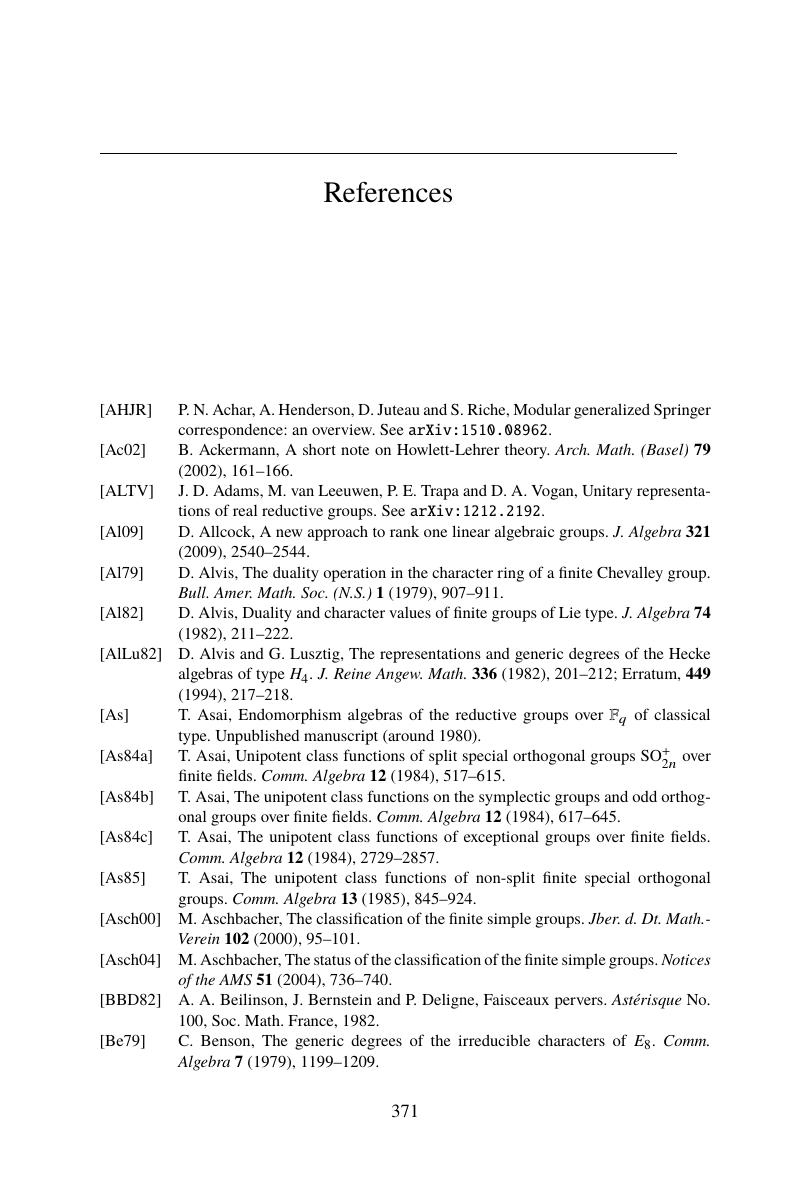References
Published online by Cambridge University Press: 20 February 2020
Summary

Information
- Type
- Chapter
- Information
- The Character Theory of Finite Groups of Lie TypeA Guided Tour, pp. 371 - 389Publisher: Cambridge University PressPrint publication year: 2020
